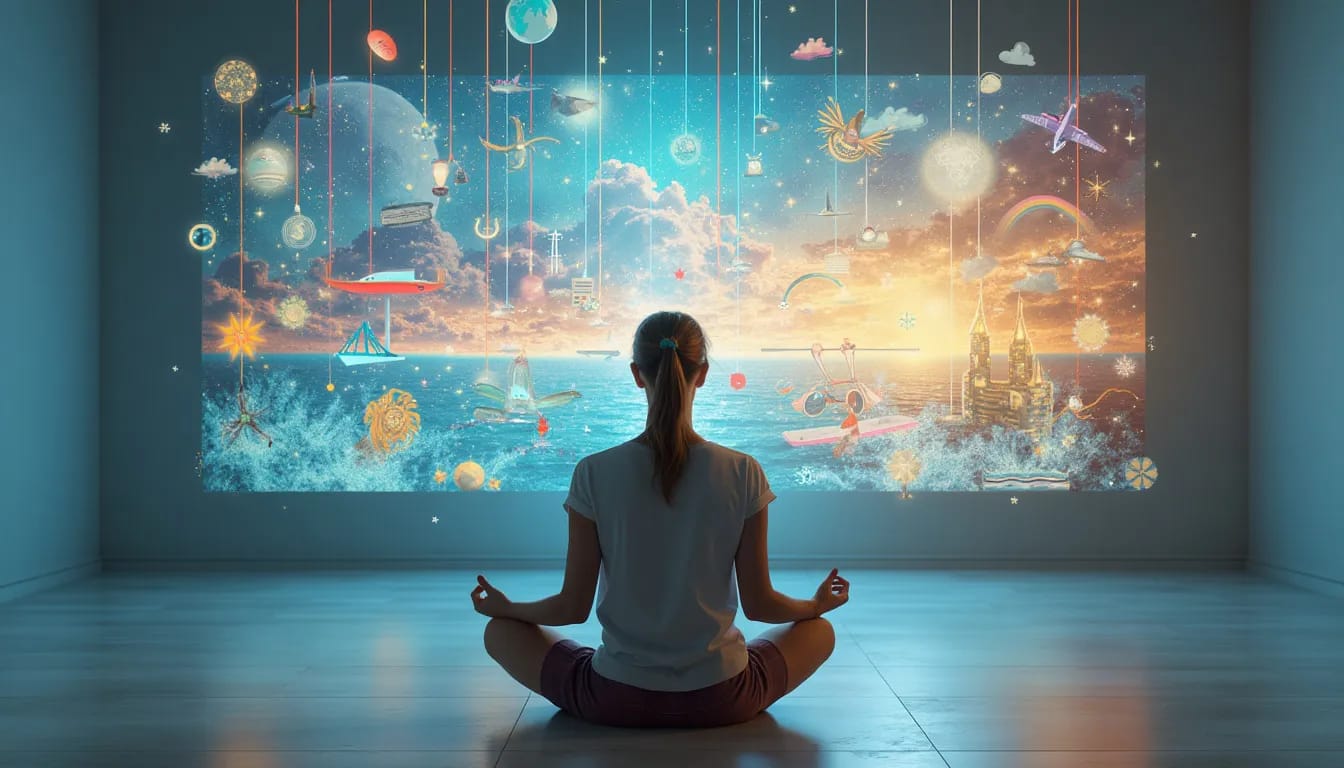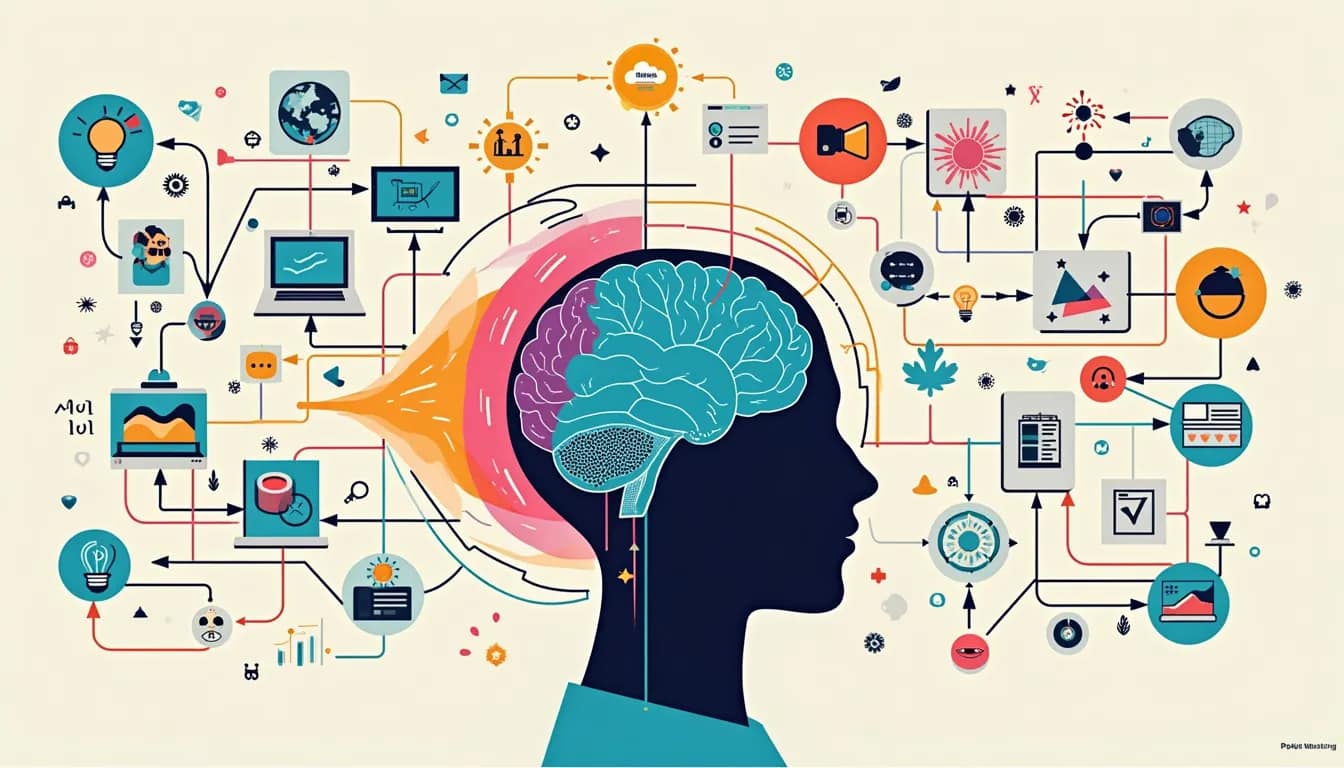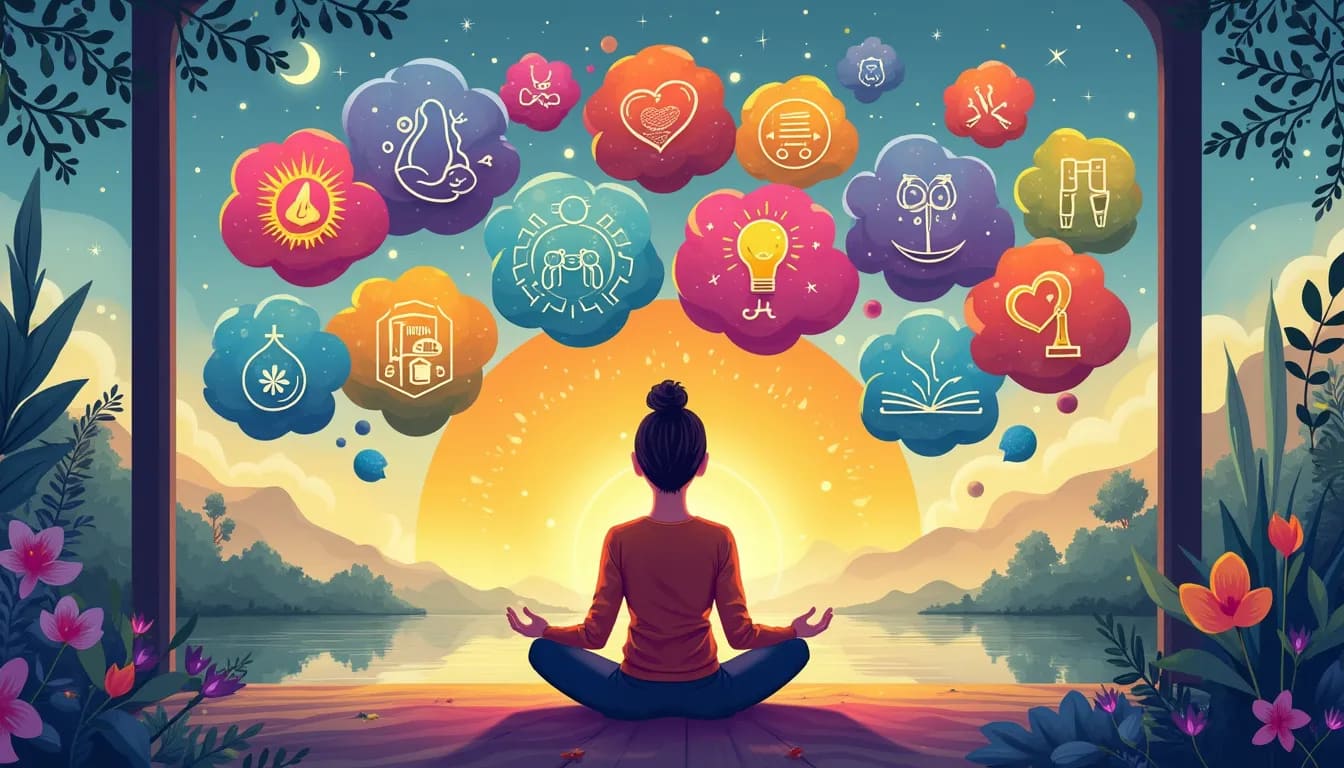In a world brimming with distractions and uncertainties, finding a way to consistently reach personal goals can often feel like an overwhelming challenge. This is where the power of visualization steps in as a beacon of clarity and direction. Visualization is more than just daydreaming; it’s a deliberate and strategic mental practice that involves creating vivid images of specific outcomes in your mind. By picturing your goals as already achieved, you create a clear and compelling vision of your future that can significantly enhance motivation, focus, and ultimately, success.
Visualization has roots that trace back through history, from ancient practices used by athletes to modern-day applications in personal development and professional success. Today, it holds a crucial place in the toolkit of individuals striving to reach their potential, providing both a psychological and physiological boost. The benefits of visualization are manifold, encompassing improved performance, enhanced creativity, and a profound increase in self-confidence.
As you embark on this journey to understand and harness visualization, you will discover how it taps into your cognitive processes to transform abstract goals into tangible achievements. Supported by a body of scientific research and real-world case studies, visualization emerges as a highly effective technique to bridge the gap between where you are and where you want to be. Dive into practical steps and proven methods to integrate visualization into your life, and explore inspiring testimonials that underscore its transformative power.
Introduction to Visualization and Its Importance
Visualization is a powerful mental exercise that involves creating vivid and detailed images in your mind to achieve your desired outcomes. Also known as mental imagery, it’s a practice that allows individuals to picture their goals and ambitions as if they have already been achieved. This practice isn’t just an abstraction but a technique deeply rooted in our psychological makeup.
Definition of Visualization
At its core, visualization is the process of using one’s imagination to create mental pictures of a future event or goal. These images can be as detailed or as broad as one desires, encompassing the various senses—sight, sound, smell, touch, and even emotion. By engaging multiple senses, the mental image becomes more tangible and realistic, making the goal more achievable.
Historical Context and Modern Relevance
The practice of visualization has a rich history that dates back to ancient cultures. Early civilizations such as the Egyptians and the Greeks used visualization for various purposes, from healing to success in battle. In modern times, this practice has found its place in various domains, including sports, education, and professional development.
Elite athletes, for instance, have long employed visualization techniques to enhance their performance. Think of Michael Phelps, the Olympic gold medalist swimmer, who visualized his swims every night before a race. In the business world, influential leaders swear by this technique to map out their strategic plans and foresee potential challenges.
Brief Overview of Its Benefits in Goal Achievement
The benefits of visualization are manifold and well-documented. Here are some ways in which visualization can significantly impact personal goal achievement:
- Enhanced Focus: By visualizing your goals, you reinforce your commitment to them. It allows you to hone in on specific objectives, providing a clearer roadmap for achieving them.
- Increased Motivation: When you can see yourself succeeding, it bolsters your drive. The positive emotions associated with visualizing success can fuel your passion and determination.
- Better Problem-Solving: Visualization often uncovers potential obstacles and solutions before they arise. This proactive approach prepares you to tackle challenges with greater ease.
- Improved Self-Confidence: Seeing yourself succeed in your mind’s eye can build your confidence. The mental rehearsal of positive outcomes makes the goals feel more attainable.
- Mind-Body Connection: Visualization can also have physiological benefits. For example, athletes often use visualization to improve their muscle memory and physical performance.
These benefits underscore why so many successful individuals make visualization a regular part of their routine. It’s not merely wishful thinking but a practical tool that aligns your mind with your ambitions.
As you embark on your journey of visualization, remember that like any skill, it requires practice and patience. Your initial images might be fuzzy or incomplete, but with time, they will become clearer and more impactful. Now, let’s delve deeper into how visualization works and the cognitive processes that make it effective.
Mechanisms of Visualization: How It Works
Cognitive Processes Involved
Visualization, often described as creating mental imagery, engages the mind in ways that are both profound and powerful. When you visualize, your brain uses similar neural networks that are active when you physically perform an activity. This engagement can enhance cognitive skills, improve focus, and foster an environment conducive to achieving goals. Think of visualization as a mental rehearsal; by consistently picturing your desired outcome, you prepare your brain to recognize opportunities and take action when they arise.
The Science Behind Visualization Techniques
Numerous studies underline the effectiveness of visualization techniques. A notable study from the Journal of Experimental Psychology highlights how mental practice can significantly improve performance in various tasks. This is because visualization activates the same brain regions involved in the actual experience, strengthening neural connections and boosting confidence.
For example, athletes often use visualization to enhance performance. By mentally rehearsing a perfect swing or a flawless dive, they can improve muscle memory and reduce anxiety. This same principle can be applied to personal goals. Whether you’re preparing for a public speaking event or envisioning a career milestone, the mental imagery lays down a neural blueprint for success.
Case Studies and Research Findings
Let’s consider a couple of real-world examples to understand better how powerful visualization can be.
One compelling case is that of professional skier, Lindsey Vonn. She attributes much of her success to rigorous mental visualization. Before every race, Vonn would mentally run through the course, visualizing each turn and jump. This practice not only prepared her physically but also mentally, giving her an edge over competitors.
Similarly, in a study conducted at the Cleveland Clinic Foundation, researchers found that participants who visualized exercising experienced a 13.5% increase in muscle strength. This was nearly half as much as those who were physically exercising. Such findings highlight that mental rehearsal can significantly impact physical reality.
Moreover, visualization has shown promise in the realm of education and professional development. Students can improve problem-solving skills and boost test performance by visualizing themselves successfully navigating difficult exams. Likewise, professionals picturing successful presentations or job interviews can enhance their confidence and readiness, often leading to better outcomes.
In your own life, you might have noticed changes when you visualize your goals with clarity and intention. Picture yourself achieving a milestone or overcoming a challenge. How does it feel? What steps did you take in your mind to get there? Often, the more detailed you are in your visualization, the more powerful the results.
By embracing the cognitive processes and scientific evidence behind visualization, you set a foundation for meaningful change. Remember, the mind is a powerful tool, capable of shaping your reality in ways yet to be discovered. Harnessing this power through visualization can be the key to unlocking your fullest potential.
Practical Steps to Harness the Power of Visualization
Embracing the power of visualization can truly transform your approach to achieving personal goals. Let’s explore some practical steps to make visualization a natural and effective part of your daily life.
Setting Clear and Achievable Goals
Before diving into visualization techniques, it’s essential to establish clear and achievable goals. Start by reflecting on what you genuinely want to achieve. Write these goals down, and make sure they are specific, measurable, attainable, relevant, and time-bound (SMART).
For example, instead of saying, I want to be healthier, specify your objective: I want to exercise for 30 minutes at least four times a week. This clarity will give your mind a structured path to visualize.
Visualization Techniques and Exercises
There are several techniques to help you harness the power of visualization effectively. Here are some beginner-friendly exercises:
- Guided Imagery: Find a quiet place, close your eyes, and take deep breaths. Imagine yourself achieving your goal in vivid detail. Engage all your senses to create a rich and immersive experience. Picture the surroundings, feel the emotions, hear the sounds, and even smell the scents associated with your achievement.
- Vision Board: Create a vision board by compiling images, quotes, and symbols that represent your goals. Place it somewhere you see daily. This constant visual reminder helps keep your goals top of mind and reinforces positive thinking.
- Daily Mental Rehearsal: Spend a few minutes each day visualizing your goals as if they have already been achieved. For instance, imagine yourself confidently delivering a presentation or celebrating the milestone of reaching your fitness targets. This practice builds mental resilience and prepares you for real-life scenarios.
Integrating Visualization into Daily Routines
Consistency is key to reaping the benefits of visualization. Integrate visualization into your daily routines with these simple strategies:
- Morning Routine: Dedicate a few minutes every morning to visualize your goals for the day. This sets a positive tone and primes your mind for success.
- Mindfulness Practices: Incorporate visualization into your mindfulness or meditation sessions. While focusing on your breath, briefly visualize your goals to harness both mindfulness and the power of visualization.
- Evening Reflection: Before bed, reflect on your day’s achievements and visualize the progress you’ll make tomorrow. This practice ensures you end your day on a positive note and reinforces your goals overnight.
Success Stories and Testimonials
Hearing from others who have harnessed the power of visualization can be incredibly motivating. Below are some real-life success stories:
Emma’s Journey to Fitness: Emma, a busy working mom, used nighttime visualization to picture her successful workout sessions. Despite her hectic schedule, she managed to lose 30 pounds over six months. “Visualization kept me focused and motivated, even on challenging days,” she shares.
John’s Career Advancement: By visualizing himself confidently engaging in meetings and presentations, John overcame his fear of public speaking. Within a year, he received a promotion and now leads a successful team. “It was surreal to see my visualizations becoming reality,” he remarks.
Interactive Element: Visualization Exercise
Allow yourself a moment now to try a brief visualization exercise:
- Sit quietly and take a few deep breaths to calm your mind.
- Close your eyes and picture a goal you want to achieve – see it vividly in your mind.
- Engage all your senses: what do you see, hear, feel, and even smell?
- Imagine the emotions you’d experience upon achieving this goal – embrace joy, pride, and satisfaction.
- Open your eyes and carry this positive energy into your day.
Engage in this exercise daily to strengthen your visualization skills and move closer to your goals. Remember, you have the power to shape your reality through the vivid images you create in your mind.
With these practical steps and techniques, you can truly harness the power of visualization to achieve your personal goals. Embrace the journey, stay consistent, and watch as your dreams unfold into reality.
As we conclude our exploration into the power of visualization in achieving personal goals, it becomes clear that visualization is more than just a mental exercise—it’s a transformative tool that can shape our reality. By understanding its roots and appreciating its modern relevance, we recognize that visualization leverages the mind’s incredible capability to influence our actions and outcomes.
We have delved into the cognitive processes that underscore this practice, examining the robust scientific evidence that supports its efficacy. The research and case studies presented underscore the tangible benefits of visualization, providing a compelling argument for its inclusion in our personal development toolkit.
Taking practical steps to harness visualization begins with setting clear and achievable goals. By defining what we truly want, we give our minds a target to aim for. Visualization techniques, such as creating vivid mental images and engaging all our senses, can transform these goals from abstract desires into concrete milestones.
Incorporating visualization into daily routines doesn’t require a significant time investment, but it does require consistency and intention. Whether through morning meditation, journaling, or brief moments of reflection throughout the day, these practices can weave visualization into the fabric of our lives, steadily guiding us towards our aspirations.
The success stories and testimonials we’ve shared illustrate the profound impact visualization can have. They serve as living proof that this technique is accessible to anyone willing to embrace it, offering hope and inspiration to those on their own journeys.
In embracing visualization, we’re choosing to nurture a powerful connection between our minds and our goals. We’re saying yes to a future shaped by intentional thought and purposeful action. Remember, visualization is not about wishing or daydreaming—it’s about mentally rehearsing success and aligning our efforts with our vision.
As you move forward, may you take these insights and apply them with confidence and curiosity. Visualize not just a future where your goals are achieved, but a present where you’re actively shaping that future, one thought and one step at a time. The power of visualization lies within you, ready to be harnessed. Take this moment to close your eyes, breathe deeply, and picture the path to your dreams. Now, let’s transform that vision into reality.



